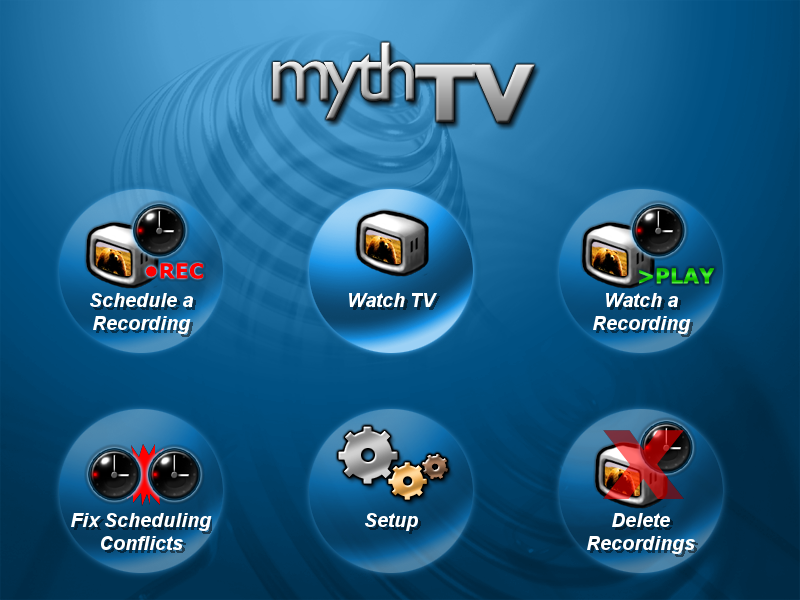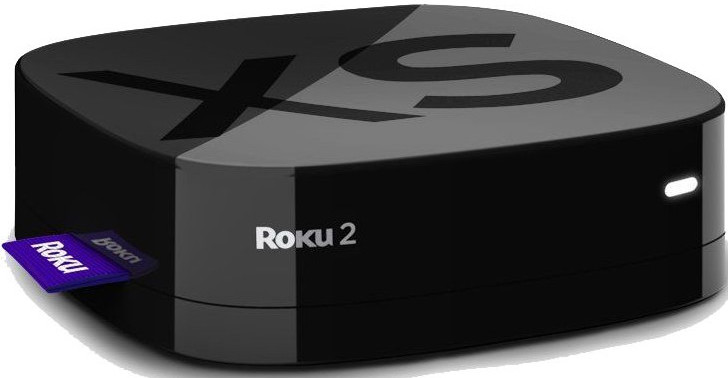|
Western Digital Media Center
The Media Center, branded by Western Digital, is a 7,200-rpm hard drive (either 160 GB or 250GB), combined with a reader of CompactFlash Type I and II, Microdrive, Memory Stick, Memory Stick Pro, MultiMediaCard, Secure Digital, and SmartMedia media. It can use either FireWire or USB to interface with a personal computer (Farrance, 2004). Although branded as a Media Center this product is not a traditional media center and is nothing but a storage device and cannot actually play any media to a TV or Monitor. It must be plugged into a computer using the appropriate software to play any media. Current products The product is now called WD TV, and supports Netflix, Pandora, and other services. The upgraded version, the WD TV Hub Live, supports Mediafly, Pandora, YouTube, Blockbuster, and Netflix. It comes with a 1 terabyte internal hard drive and can sync media using a "watched folders" paradigm from either a Mac or a PC. It does not support wi-fi natively, but this can be remedied ... [...More Info...] [...Related Items...] OR: [Wikipedia] [Google] [Baidu] |
Western Digital
Western Digital Corporation (WDC, commonly known as Western Digital or WD) is an American computer drive manufacturer and data storage company, headquartered in San Jose, California. It designs, manufactures and sells data technology products, including data storage devices, data center systems and cloud storage services. Western Digital has a long history in the electronics industry as an integrated circuit maker and a storage products company. It is one of the largest computer hard disk drive manufacturers, along with producing solid state drives and flash memory devices. Its competitors include the data management and storage companies Seagate Technology and Micron Technology. History 1970s Western Digital was founded on April 23, 1970, by Alvin B. Phillips, a Motorola employee, as General Digital Corporation, initially a manufacturer of MOS test equipment. It was originally based in Newport Beach, California, shortly thereafter moving to Santa Ana, California, a ... [...More Info...] [...Related Items...] OR: [Wikipedia] [Google] [Baidu] |
Home Theater PC
A home theater PC (HTPC) or media center computer is a convergent device that combines some or all the capabilities of a personal computer with a software application that focuses on video, photo, audio playback, and sometimes video recording functionality. Since the mid-2000s, other types of consumer electronics, including game consoles and dedicated media devices, have crossed over to manage video and music content. The term "media center" also refers to specialized application software designed to run on standard personal computers. HTPC and other convergent devices integrate components of a home theater into a unit co-located with a home entertainment system. An HTPC system typically has a remote control and the software interface normally has a 10-foot (3 m) user interface design so that it can be comfortably viewed at typical television viewing distances. An HTPC can be purchased pre-configured with the required hardware and software needed to add video programming ... [...More Info...] [...Related Items...] OR: [Wikipedia] [Google] [Baidu] |
Comparison Of Set-top Boxes
A digital media player is a home entertainment consumer electronics device that can connect to a home network to stream digital media (such as music, pictures, or video). Standalone streaming players ''This list does not include discontinued or legacy media players.'' Gaming systems Content agreements Internet video services US television services NOTE: These tables are not comprehensive or all inclusive; some pay-TV services may not have contracts with certain networks or refuse to serve networks on certain platforms. See also * Digital media player * List of smart TV platforms * List of microconsoles * Home theater PC A home theater PC (HTPC) or media center computer is a convergent device that combines some or all the capabilities of a personal computer with a software application that focuses on video, photo, audio playback, and sometimes video recording ... References {{DEFAULTSORT:Digital media players comparison . Technological comparisons ... [...More Info...] [...Related Items...] OR: [Wikipedia] [Google] [Baidu] |
Media Extender
A digital media player (also sometimes known as a streaming device or streaming box) is a type of consumer electronics device designed for the storage, playback, or viewing of digital media content. They are typically designed to be integrated into a home cinema configuration, and attached to a television and/or AV receiver. The term is most synonymous with devices designed primarily for the consumption of content from streaming media services such as internet video, including subscription-based over-the-top content services. These devices usually have a compact form factor (either as a compact set-top box, or a dongle designed to plug into an HDMI port), and contain a 10-foot user interface with support for a remote control and, in some cases, voice commands, as control schemes. Some services may support remote control on digital media players using their respective mobile apps, while Google's Chromecast ecosystem is designed around integration with the mobile apps of con ... [...More Info...] [...Related Items...] OR: [Wikipedia] [Google] [Baidu] |
DLNA
Digital Living Network Alliance (DLNA; originally named Digital Home Working Group, DHWG) was founded by a group of PC and consumer electronics companies in June 2003 (with Intel in the lead role) to develop and promote a set of interoperability guidelines for sharing digital media among multimedia devices under the auspices of a certification standard. DLNA certified devices include smartphones, tablets, PCs, TV sets and storage servers. The group published its first set of guidelines in June 2004. The guidelines incorporate several existing public standards, including Universal Plug and Play (UPnP) for media management and device discovery and control, and widely used digital media formats and wired and wireless networking standards. DLNA worked with cable, satellite, and telecom service providers to provide link protection on each end of the data transfer. The extra layer of digital rights management (DRM) security allows broadcast operators to communicate digital media to ... [...More Info...] [...Related Items...] OR: [Wikipedia] [Google] [Baidu] |
Roku
Roku ( ) is a brand of hardware digital media players manufactured by American company Roku, Inc. They offer access to streaming media content from online services. The first Roku model, developed in collaboration with Netflix, was introduced in May 2008. Roku devices are considered to have popularized the concept of low-cost, small-form-factor set-top boxes for over-the-top media consumption. Roku has also licensed its platform as middleware for smart TVs. As of September 2022, Roku ha65.4million active accounts. History Roku was founded by Anthony Wood in 2002, who had previously founded ReplayTV, a DVR company that competed with TiVo. After ReplayTV's failure, Wood worked for a while at Netflix. In 2007, Wood's company began working with Netflix on Project:Griffin, a set-top box to allow Netflix users to stream Netflix content to their TVs. Only a few weeks before the project's launch, Netflix's founder Reed Hastings decided it would hamper license arrangements with ... [...More Info...] [...Related Items...] OR: [Wikipedia] [Google] [Baidu] |
Iomega
Iomega (later LenovoEMC) produced external, portable, and networked data storage products. Established in the 1980s in Roy, Utah, United States, Iomega sold more than 410 million digital storage drives and disks, including the Zip drive floppy disk system. Formerly a public company, it was acquired by EMC Corporation in 2008, and then by Lenovo, which rebranded the product line as LenovoEMC, until discontinuation in 2018. History Iomega started in Roy, Utah, U.S. in 1980 and moved its headquarters to San Diego, California in 2001. For many years, it was a significant name in the data storage industry. Iomega's most famous product, the Zip Drive, offers relatively large amounts of storage on portable disks. The original Zip disk's 100MB capacity is a huge improvement over the decades-long standard of 1.44MB floppy disks. The Zip Drive became a common internal and external peripheral for IBM-compatible and Macintosh personal computers. However, Zip disks sometimes failed after ... [...More Info...] [...Related Items...] OR: [Wikipedia] [Google] [Baidu] |
Seagate Technology
Seagate Technology Holdings plc is an American data storage company. It was incorporated in 1978 as Shugart Technology and commenced business in 1979. Since 2010, the company has been incorporated in Dublin, Ireland, with operational headquarters in Fremont, California, United States. Seagate developed the first 5.25-inch hard disk drive (HDD), the 5-megabyte ST-506, in 1980. They were a major supplier in the microcomputer market during the 1980s, especially after the introduction of the IBM XT in 1983. Much of their growth has come through their acquisition of competitors. In 1989, Seagate acquired Control Data Corporation's Imprimis division, the makers of CDC's HDD products. Seagate acquired Conner Peripherals in 1996, Maxtor in 2006, and Samsung's HDD business in 2011. Today, Seagate, along with its competitor Western Digital, dominates the HDD market. History Founding as Shugart Technology Seagate Technology (then called Shugart Technology) was incorporated o ... [...More Info...] [...Related Items...] OR: [Wikipedia] [Google] [Baidu] |
WD TV
The WD TV is a consumer device that was produced by Western Digital which plays videos, images, and music from USB drives or network locations. The device was introduced in 2008 and played high-definition video through an HDMI port, and standard video through composite video cables. The device had support for most common video and audio formats. The WD TV was discontinued as of August 2016. Models WD TV (1st Gen) In November 2008 Western Digital introduced the WD TV. with full HD 1080p multimedia player with DTS pass-through only. The hardware starts with a 300 MHz TangoX MIPS 4KEc from Sigma Designs, which has 100 MB of memory. WD TV (2nd Gen) Updated device with 2-channel DTS support. Uses the same Sigma SMP8655 Secure Media Processor as the Live. WD TV Mini Released in Fall 2009, it was a Media Player with DVD quality, upscales to 1080i, Plays back RealVideo and many other popular file formats with no need for transcoding, but lacks the ability to play H.264 encode ... [...More Info...] [...Related Items...] OR: [Wikipedia] [Google] [Baidu] |
Personal Computer
A personal computer (PC) is a multi-purpose microcomputer whose size, capabilities, and price make it feasible for individual use. Personal computers are intended to be operated directly by an end user, rather than by a computer expert or technician. Unlike large, costly minicomputers and mainframes, time-sharing by many people at the same time is not used with personal computers. Primarily in the late 1970s and 1980s, the term home computer was also used. Institutional or corporate computer owners in the 1960s had to write their own programs to do any useful work with the machines. While personal computer users may develop their own applications, usually these systems run commercial software, free-of-charge software (" freeware"), which is most often proprietary, or free and open-source software, which is provided in "ready-to-run", or binary, form. Software for personal computers is typically developed and distributed independently from the hardware or operating system ma ... [...More Info...] [...Related Items...] OR: [Wikipedia] [Google] [Baidu] |
Revolutions Per Minute
Revolutions per minute (abbreviated rpm, RPM, rev/min, r/min, or with the notation min−1) is a unit of rotational speed or rotational frequency for rotating machines. Standards ISO 80000-3:2019 defines a unit of rotation as the dimensionless unit equal to 1, which it refers to as a revolution, but does not define the revolution as a unit. It defines a unit of rotational frequency equal to s−1. The superseded standard ISO 80000-3:2006 did however state with reference to the unit name 'one', symbol '1', that "The special name revolution, symbol r, for this unit is widely used in specifications on rotating machines." The International System of Units (SI) does not recognize rpm as a unit, and defines the unit of frequency, Hz, as equal to s−1. :\begin 1~&\text &&=& 60~&\text \\ \frac~&\text &&=& 1~&\text \end A corresponding but distinct quantity for describing rotation is angular velocity, for which the SI unit is the ... [...More Info...] [...Related Items...] OR: [Wikipedia] [Google] [Baidu] |






